标签:elf 识别 保留字 upm erro tps concepts 系统 学习总结
问题2解决方案:尝试一下,如图
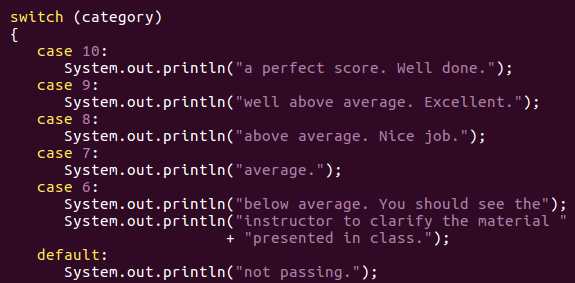
我将所有的break语句删除,并没有出现书上所谓的执行下一条case子句,而是执行default之后的指令。
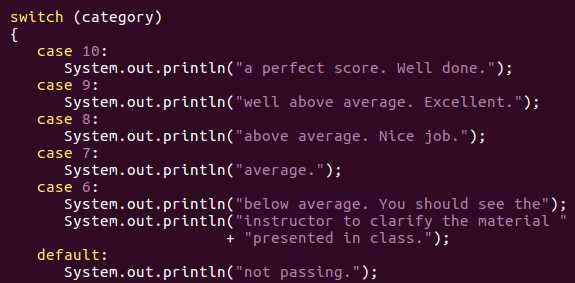
当我只除去其中一条break语句后
即出现了答案所示的情况,将执行下一条case子句

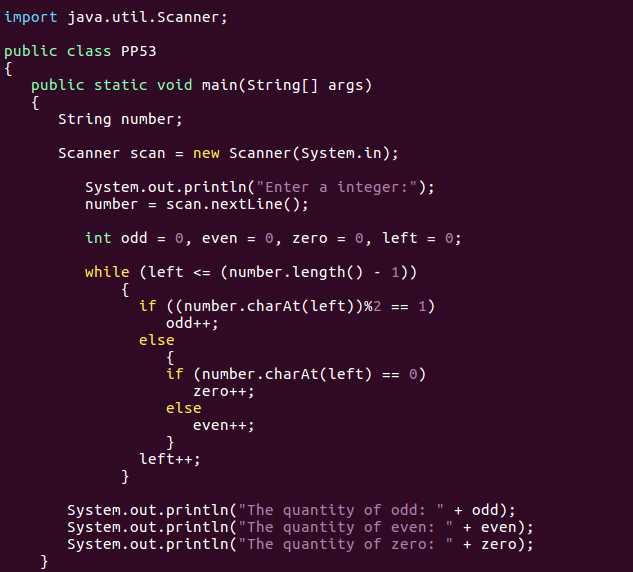

number.charAt(left) == 48;,统计时就不会再出错。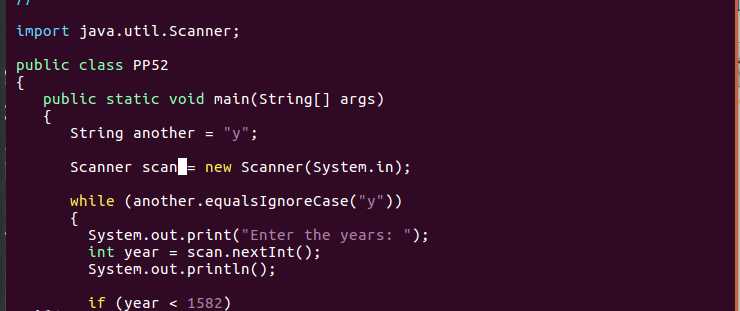

|
问题3:编写例5.10的例子时,在bin文件夹下创建了一个urls.inp的输入文件,如图 |
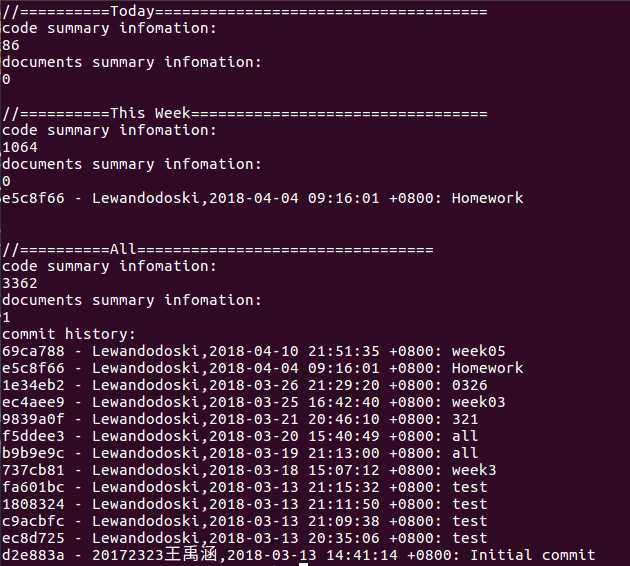
解析:保留字“new”用于实例化一个对象,声明new后面跟着的是类名,这就是类的构造方法。如
Car x = new Car( );将会实例化一个car类,并赋予一个变量X。
问题2:A class‘ constructor usually defines(一个类的构造函数通常定义:)
A.how an object is initialized(对象如何初始化)
B.how an object is interfaced(对象是如何交互的)
C.the number of instance data in the class(类中的实例数据)
D.the number of methods in the class(类中的方法)
E.if the instance data are accessible outside of the object directly(实例数据是否能被类外部的对象直接引用)
解析:构造函数(constructor)是一种特殊的方法。主要用来在创建对象时初始化对象, 即为对象成员变量赋初始值,总与new运算符一起使用在创建对象的语句中 。
问题3:Instance data for a Java class
A.are limited to primitive types (e.g., int, float, char)
B.are limited to Strings
C.are limited to objects(e.g., Strings, classes defined by other programmers)
D.may be primitive types or objects, but objects must be defined to be private
E.may be primitive types or objects
解析:实例数据是组成类的实体,它可以是任何可用的类型,无论是原始的还是对象的,public型还是private型。
问题4:Java methods can return only primitive types (int, double, float, char, boolean, etc).
A.true
B.false
解析:Java方法同样可以返回一个对象,如字符串String。
问题5:Formal parameters are those that appear in the method call and actual parameters are those that appear in the method header. (形式参数是在方法调用中出现的参数,实际参数是在方法头中出现的参数。)
A.true
B.false
解析:实际参数是在方法调用中出现的参数,形式参数是在方法头中出现的参数。
问题6:All Java classes must contain a main method which is the first method executed when the Java class is called upon.(所有的Java类都必须包含一个main方法,这是在调用Java类时执行的第一个方法。)
A.true
B.false
解析:只有驱动程序需要一个main方法。驱动程序是在任何Java程序中首先执行的,但是它可以根据需要调用其他类,而这些其他类不需要main方法。
问题7:Every class definition must include a constructor.
A.true
B.false
解析:Java允许在没有构造函数的情况下定义类,然而,在这种情况下,有一个默认的构造函数。
问题8:During program development, software requirements specify
A.how the program will accomplish the task
B.what the task is that the program must perform
C.how to divide the task into subtasks
D.how to test the program when it is done
E.all of the above
解析:软件需求指定了程序必须完成的功能,指明了程序应当执行的任务,而不是描述如何执行所规定的任务。通常,任务需求用一个称为功能说明的文档来描述。
问题9:An object that refers to part of itself within its own methods can use which of the following reserved words to denote this relationship?(一个在自己的方法中引用自身部分的对象可以使用下列保留的词语来表示这种关系?)
A.inner
B.i
C.private
D.this
E.static
解析: this引用允许对象引用自己。非静态方法需要通过具体的对象和类来引用,this引用可用于引用当前正在运行的对象。
问题10:Inheritance through an extended (derived) class supports which of the following concepts?
A.interfaces
B.modulary
C.information hiding
D.code reuse
E.correctness
解析:通过延长一个类并继承它,新类不必重新实现任何继承的方法或实例数据,从而为程序员节省了一项工作。因此,代码复用是通过将其扩展为需要而复用其他人的代码的能力
问题11:Java does not support multiple inheritance, but some of the abilities of multiple inheritance are available by
A.importing classes
B.implementing interfaces
C.overriding parent class methods
D.creating aliases
E.using public rather than protected or private modifiers
解析:由于类可以实现任意数量的接口,所以该类本质上是使用接口类,就好像这些接口是在该类中定义的那样。因此,该类继承了接口的方法和常量。此外,该类还可以扩展另一类,从而直接或间接地从多个类继承。这与多重继承并不完全相同,但它与Java的概念非常接近。
问题12:The goal of testing is to
A.ensure that the software has no errors
B.find syntax errors
C.find logical and run-time errors
D.evaluate how well the software meets the original requirements
E.give out-of-work programmers something to do
解析:测试是必需的,因为所有的软件都有错误。复杂的系统在发布之前尤其需要测试。所寻找的错误类型是逻辑错误和运行时错误。所有的语法错误都将在实施过程中被识别和修复。
问题13:Interface classes cannot be extended but classes that implement interfaces can be extended.(接口类不能被扩展,但是实现接口的类可以被扩展。)
A.true
B.false
解析:任何类都可以被扩展,无论它是一个接口,还是实现一个接口,或者两者都没有。唯一的例外是,如果该类被显式地用“final”这个词进行修饰,在这种情况下,它不能被扩展。
问题14:All objects implement Comparable.
A.true
B.false
解析:可比性是一个接口,类必须定义compareTo方法,并声明它实现了可比较性。大多数类没有实现可比性。
问题15:In black-box testing, the tester should already know something about how the program is implemented so that he/she can more carefully identify what portion(s) of the software are leading to errors.
A.true
B.false
解析:如果测试人员确实知道程序是如何工作的,那么测试人员的测试用例可能是有偏见的。
感觉这周像是轻松了不少,第五,六章的内容相较于上周也要简单很多,可是考试也没有考得多好。有一个很大的原因是单词的积累量不够,特别是一些计算机技术的专业名词我的积累量明显不足。这点需要特别注意。
| 代码行数(新增/累积) | 博客量(新增/累积) | 学习时间(新增/累积) | 重要成长 | |
|---|---|---|---|---|
| 目标 | 5000行 | 30篇 | 400小时 | |
| 第一周 | 117/117 | 1/1 | 19/19 | |
| 第二周 | 289/406 | 1/2 | 21/40 | |
| 第三周 | 403/809 | 2/4 | 22/62 | |
| 第四周 | 1783/2592 | 1/5 | 35/97 | |
| 第五周 | 770/3362 | 1/6 | 25/122 |
计划学习时间:20小时
实际学习时间:25小时
20172323 2017-2018-2 《程序设计与数据结构》第五周学习总结
标签:elf 识别 保留字 upm erro tps concepts 系统 学习总结
原文地址:https://www.cnblogs.com/Lewandodoski/p/8780137.html